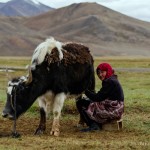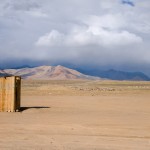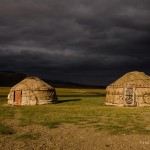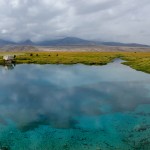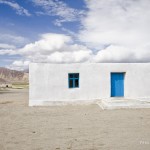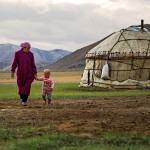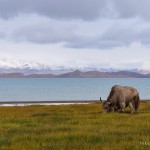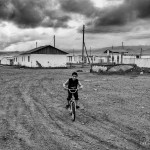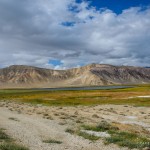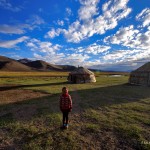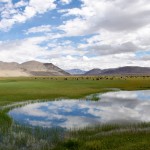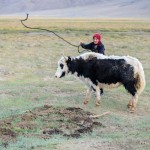The lakes of Pamir in Tajikistan are an extraordinary kaleidoscope of colorful blues and greens. Each one is totally unique and well worth a visit. Whether you explore the mountain lakes of Pamir by foot on a trekking holiday or by four-wheel drive on a jeep tour, there is plenty to tempt you to this unchartered territory in Tajikistan.
Explore the legendary Lake Sarez, the gorgeous green waters of Lake Yashikul or tackle the gravel road to Rangkul Lake. Whichever lake you choose, make sure you are well equipped for the time of year with everything you need for a few days.
As many of the Pamir lakes are located in isolation, you may be far away from civilization and one landslide away from getting back to it. If you are hiking around the high-altitude lakes of Karakul, then make sure to allow a few days to acclimatize first.
Bulunkul Lake
Bulunkul Lake is a pretty freshwater lake in the Gorno-Badakhshan Autonomous Region (GBAO) of south-eastern Tajikistan. Covering an impressive 3,900 hectares, the lake is bordered by lush vegetation and filled with introduced fish like gibel carp. In fact, one of the highlights of a visit to Bulunkul Lake is the chance to eat some freshly caught lake fish.
Many trekkers embrace the journey to Bulunkul Lake in Tajikistan. Most are intrigued by the nearby village with the same name that is believed to have had the coldest recorded temperature in Central Asia – a frosty -63 degrees Celsius! For those who wish to trek from Bulunkul Lake to Yashikul Lake, it is easily doable with just an hour’s hike each way.
© Stephane Gisiger
Yashikul Lake
Like Bulunkul Lake, Yashikul Lake (‘Green Lake’) is a gorgeous freshwater lake in the Gorno-Badakhshan Autonomous Region (GBAO) of south-eastern Tajikistan. Nestled within the upper reaches of the Pamir Mountains – at an elevated 3,700 meters – the lake was formed when a mudslide blocked off the Alichur river thousands of years ago.
Getting to Lake Yashikul is fairly easy if you have a four-wheel drive vehicle and the weather permits it. The road that leads to the lake is unpaved and is often blocked off by winter snowfall. Driving here after it’s rained turns the gravel to sludge that can be tricky to navigate.
Stretching for 19 kilometers and 50 meters at its deepest, the lake water is so clear in some places that you can see the marinka fish and trout beneath the surface of the water. What’s more, Yashikul forms part of the Bulunkul and Yashi Kul lakes and mountains’ Important Birding Area with plenty of interesting water birds calling it home. Keep an eye out for the ‘Tuya Suu’, a legendary water camel that locals believe lives in the lake.
©Jennifer Hattam
Karakul Lake, Tajikistan
Karakul Lake, which means ‘Black Lake’, is a lake that has formed within a natural crater in Pamir National Park, Tajikistan. Despite its name, the waters of the lake are actually a stunning bright blue in the summertime. Even though the water comes from snowmelt from surrounding glaciers, the lake is salty and not swimming-friendly. It is one of the more difficult lakes to reach as it is located 3,960 meters above sea level and requires a few days of acclimatization, yet the lake remains a popular spot on many a trekker’s bucket list.
Lake Karakul in Tajikistan is split into two basins by a peninsula and covers 380 square kilometers. One basin is small and shallow and the other is larger and deeper. The lake is not the best spot for a swim as it is filled with brackish water but the surrounding scenery of farmland, marshes, lake islands, and wetlands are a thriving habitat for birds and wildlife.
Tajikistan’s Karakul Lake has been listed as an Important Birding Area due to it providing a home to resident and migrant birds. Species worth spotting include bar-headed goose, saker falcon, Himalayan vulture, and white-winged snowfinch, just to name a few.
© L W
Rangkul Lake
Rangkul Lake, also spelled Rang-Kul Lake, is another Tajikistan lake located 45 kilometers from Murgab village. Surrounded by arid desert landscapes, this scenic freshwater lake has been formed by melting snow. This large lake along with nearby Shorkul Lake is a great place to trek to in Tajikistan.
For those who would prefer not to tackle the rough terrain on foot, Lake Rangkul can also be visited by four-wheel drive vehicles. Summer is the best time to visit the lakes when the turquoise waters are fringed by lush reeds and grasses. Because both of these lakes in Tajikistan are very shallow, they are prone to freezing over in winter.
While there are no official hotels near Rangkul Lake and the nearby village is very basic, a few homestays and yurts nearby enhance the tourist experience.
© Dimsun Raizen
Sarez Lake
Tucked deep in the heart of the Bartang Valley, the 75 kilometer long Sarez Lake is one of the most stunning and unusual lakes in Tajikistan. Aptly nicknamed the ‘Sleeping Dragon’, like Yashikul Lake, Sarez Lake was formed when a massive earthquake caused a rock slide to fall down and block the stretch of the Bartang River near Murgab. Having formed a natural dam called Usoi, the water levels have to be constantly monitored for safety.
Unlike the rest of Tajikistan’s mountain lakes, Lake Sarez is a bit more tricky to get to. Located at an altitude of 3,000 meters, visitors will have to acclimatize first. You will also need all sorts of permits to gain access to the lake and the dam. These include a Sarez Lake permit, a GBAO permit, and a Tajik National Park permit. They will also require the services of a local guide – all of which can be arranged for you by Paramount Journey.
The lakes of Pamir in Tajikistan are well worth a visit on your next trip to Tajikistan. They can be easily combined with many of Paramount Journey’s other Tajikistan trekking adventures, including a visit to the Fann Mountains, Iskanderkul and the Seven Lakes, Tajikistan. Take a look at our tours and itineraries for more information.











